Nanette Fluhr’s portrait paintings – whether commissioned or for pure self-expression – have a personal touch that transcends the artist/model relationship, inviting the viewer to feel a similar sense of connection within her works.
In this captivating Q&A, fellow master artist Daniel Maidman interviews Fluhr on her portrait painting inspirations, her process, and her participation in the MEAM’s 2021 exhibition “Women Painting (All Over the World).”
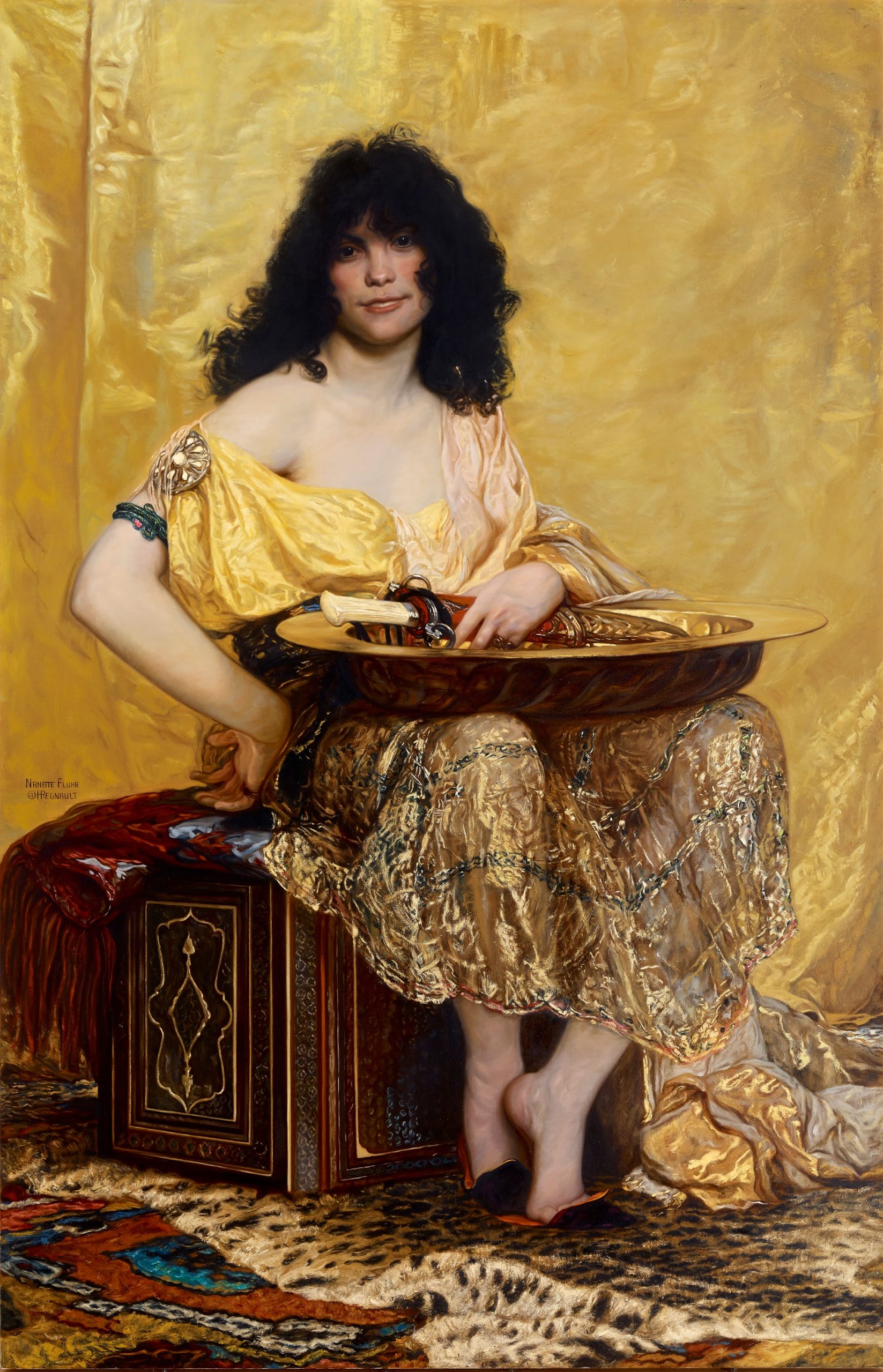
Q&A with Nanette Fluhr
BY DANIEL MAIDMAN
Originally published in 2021, still relevant today
Daniel Maidman: Congratulations on exhibiting at 2021 MEAM (European Museum of Modern Art)! Can you tell us a little bit about MEAM and about the exhibition, “Women Painting (All Over the World)?”
Nanette Fluhr: Thank you, I’m absolutely delighted to be included in this invitational exhibition at the MEAM. The MEAM is housed in an 18th-century palace located in the heart of Barcelona, Spain. It is unique in that it actively supports living realist and representational artists.
“Women Painting (All Over the World)” opened on Monday, March 8, coinciding with International Women’s Day. The exhibition includes 87 paintings and drawings by more than 78 women artists from 25 different countries and highlights the role of women in figurative art, a field historically dominated by male artists.
Each of the invited artists was asked to present a piece that shows their best work. It seemed fitting to send my oil painting “Manu” to this exhibition celebrating women and our passion for art. The appeal of portraying a female friendship, especially one shared by two female artists was strong.
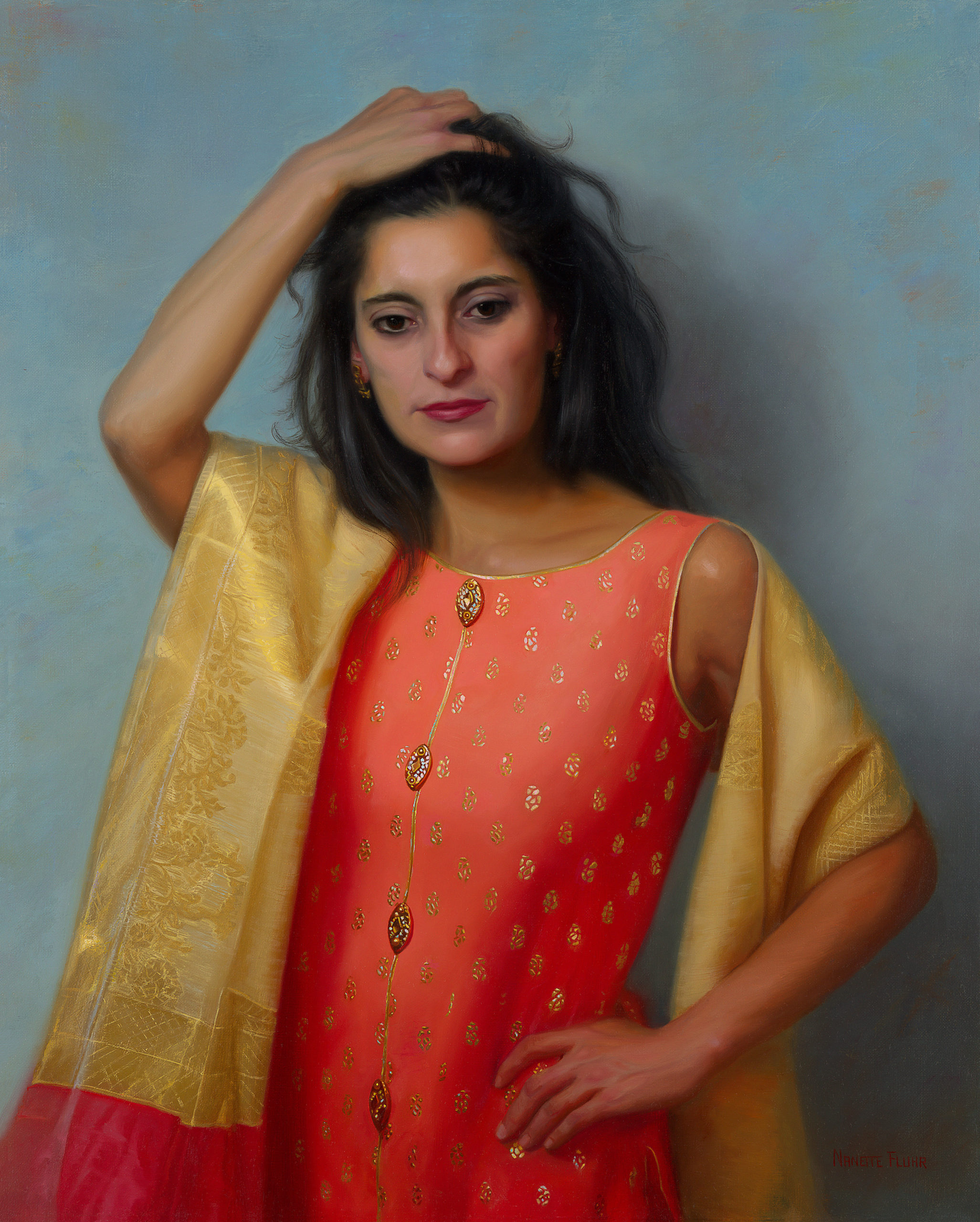
DM: As you say, your portrait painting, “Manu,” is of a friend and fellow painter, Manu Saluja. Much of your work is commissioned portraiture, and you take a warm, personal approach to your subjects. Can you describe how you approach commissioned portraits?
NF: I have been very fortunate in the portrait painting commissions that I receive; my clients have hired me because they like my work, trust me and are very receptive to what I think would make a strong painting.
I take time to get to know the person as I don’t want to just paint their physical likeness; I want their essence to come through. So how I pose them, the clothing, lighting, and expression all come into play. I always see if there are any props that would help tell their story.
For example, Judge Apotheker was a Drug Court Judge. The pose he originally wanted was “you’re going to jail.” It was a very stern pose and as I sat and spent time with him I realized it would be a huge disservice to him if I painted him like that. He is a kind, compassionate man, created a program that saved many lives, and did everything he could to help people because he realized the power he had.
He was wise enough to have a very diverse team (30 years ago) because he realized the importance of different perspectives. Through our conversations, I also learned he had appeared on a case before the Supreme Court at 33 years old, so I wanted to include that book. It made it more personal and meaningful.
Regardless of who I’m painting I’m always seeking the best method to express my idea visually and impact a viewer in a meaningful way. I try to look at my sitters through a lens of compassion and curiosity.
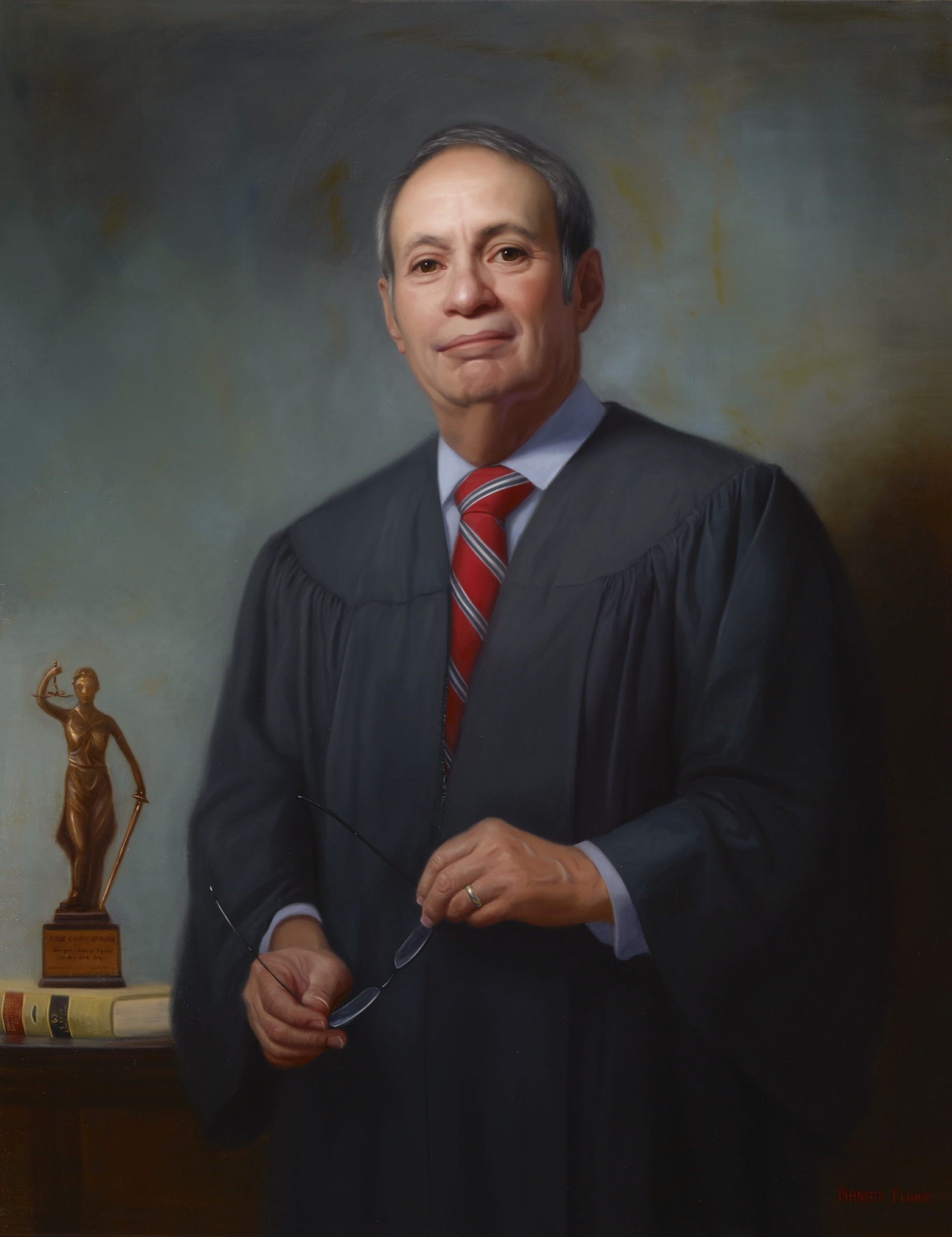
DM: How is the experience of painting a friend and colleague, as in the case of the Manu painting, different from your commissioned portraiture?
NF: A portrait commission is a collaboration and you must satisfy your client. This doesn’t bother me at all as I enjoy collaborating. But when not doing commissioned work, my process is more free-flowing. I still create studies, but I rely more on my intuition.
If someone is close to you, you already know them, so you don’t need to actively seek to learn about them. That said, it’s like peeling the layers of the onion and studying the forms of their face and painting them allows you to connect in a different, more intimate way.
Similar to “Portrait of my Grandfather,” where I enjoyed studying my grandfather’s face and all that shaped him into the man he was, there was great appeal in portraying my friendship with Manu. In both cases I think the love, respect and admiration I feel comes through.
I welcomed the opportunity to portray Manu’s beauty as a person, and the luminosity of the langa she is wearing is a direct metaphor for her unique and shining spirit. Her attitude of relaxed observation contradicts her formal attire—painted directly from observation. I wanted to emphasize the individual.
Painting Manu was pure joy for me! I was also working on a replica of Regnault’s Salome at the time for a treasured client. This painting, while a favorite of mine at the Met, tested my skills like no other. It was intense in both subject matter and detail compared to the great freedom in painting Manu.
DM: What’s your background? How did you develop your technical skills and what art informed the development of your own vision as an artist?
NF: I graduated from Rutgers. Then I attended the School of Visual Arts to further hone my skills. While at SVA I was fortunate to find John Frederick Murray.
Upon meeting John, I realized that he had immense knowledge of drawing, painting and picture-making skills gleaned from the techniques of the Old Masters. I wanted to learn these traditional techniques. They weren’t as readily available when I was a student as they are now. I studied with John both at SVA and at his Rockville Center Atelier. I developed my technical skills by spending time drawing and painting from the live model, casts, and drapery, as well as studying composition. There was a great focus on the masters and what makes great art.
When John closed the Rockville studio, he suggested that I go to the Met and copy directly from my favorite masterpieces. I researched each painting before I copied it. I wanted not just to replicate the finish, which would be missing the larger lesson, but to understand how the masters achieved what they did. I painted replicas of paintings by Lawrence, Le Brun, Rembrandt, Rubens, Velazquez, and Van Dyke while I was a registered copyist with the Met. This experience was incredible and allowed me to carefully study these masterpieces with the depth and focus they deserve and then incorporate what I learned into my own work.
The art of the Old Masters greatly informed the development of my own vision as an artist. The art of Rembrandt in particular, and how he captured humanity. His work demonstrates mastery of space and light, matched only by his empathy and sincerity as a storyteller. Despite his ability to bring compelling subjects to life in profound three-dimensional reality, he never stopped learning or experimenting. I replicated his “Portrait of Herman Doomer” at the Met and it greatly influenced my “Portrait of My Grandfather,” especially in the use of chiaroscuro.
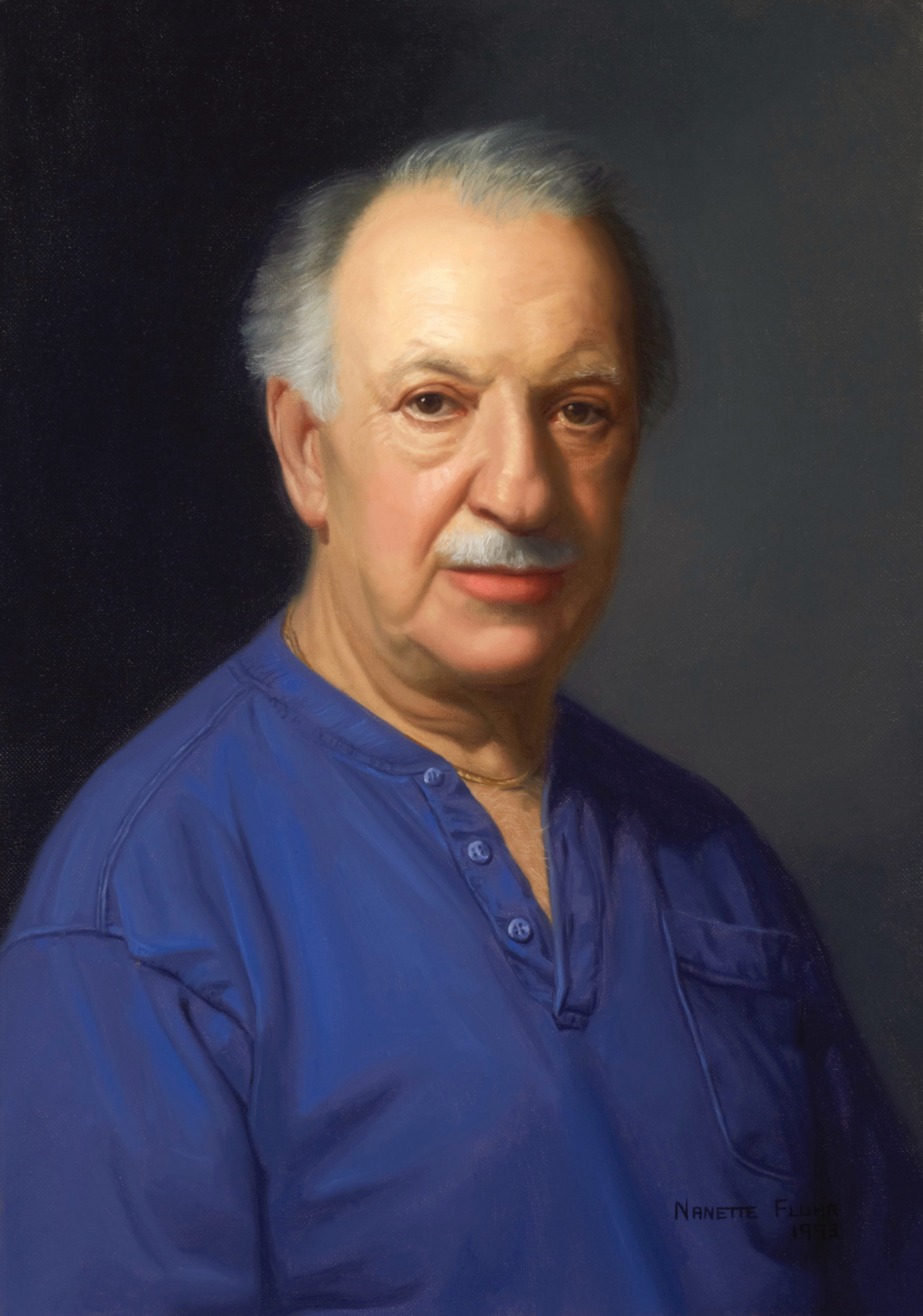
Regardless of what or for whom I’m creating in portrait paintings, I spend a lot of time on the picture-making aspects, such as coming up with an idea that will stand the test of time and arranging the shapes of the painting into a pleasing visual pattern. When you look at great art, that is the one common thread: they are all designed beautifully and have staying power.
ABOUT NANETTE FLUHR
With over two decades of professional experience, Nanette Fluhr has created portrait paintings that hang in public and private collections worldwide. She has received awards and honors from such institutions as The Art Renewal Center, The Artist’s Magazine, The Catherine Lorilland Wolfe Art Club, The Portrait Society of America, and the School of Visual Arts. Her work has been displayed at The Butler Institute of American Art, The Salmagundi Club, The National Arts Club, and The Wausau Museum of Contemporary Art, as well as in a six-museum exhibit on contemporary American realism in China.
As a faculty member of the Art League of Long Island and visiting faculty member of the Teaching Studios of Art, Fluhr shares her extensive knowledge of traditional realism with the next generation. She teaches workshops at many institutions and is a featured art instructor with Craftsy.
To learn more about upcoming workshops or to find out more about her portraiture, please visit her website: www.nanettefluhr.com.
ABOUT DANIEL MAIDMAN
Daniel Maidman is best known for his vivid depiction of the figure. Maidman’s drawings and paintings are included in the permanent collections of the Library of Congress and a variety of America museums. His art and writing on art have been featured in The Huffington Post, Poets/Artists, ARTnews, Forbes, W, and many others. He has been shown in solo shows in New York City and in group shows across the United States and Europe. In 2021 he will be included in the first digital archive of art stored on the surface of the Moon. His books, Daniel Maidman: Nudes and Theseus: Vincent Desiderio on Art, are available from Griffith Moon Publishing. He works in Brooklyn, New York. His current work can be found on Instagram at @danielmaidman.
Related Articles on Portrait Paintings and Figurative Art >
Learn how to draw the figure with Daniel Maidman’s four-hour art video workshop, “Enhanced Life Drawing” (preview below)


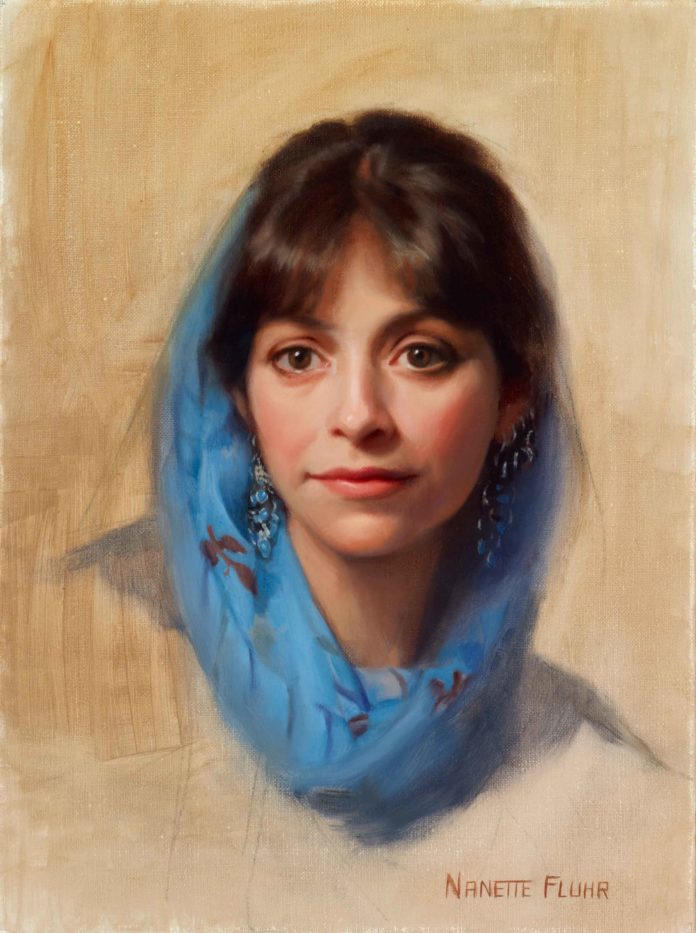



[…] Read the article: https://realismtoday.com/its-personal-portrait-paintings-by-nanette-fluhr/ […]
Comments are closed.